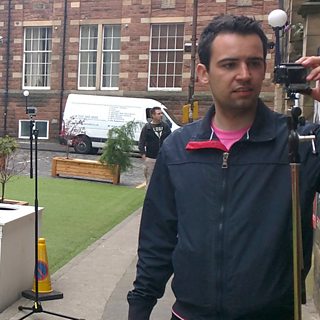This year has been an exciting year for us in the team, with momentum building within the broadcast industry toward a transition to an IP future. Our goal of end-to-end IP broadcast is beginning to turn into reality, and as it does so we are working hard to ensure that the ����ý and the wider industry has the technology it needs.
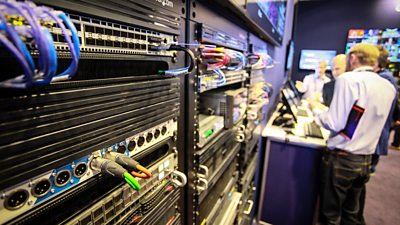
For those not familiar with our work, our research focuses on treating the video, audio and data created during production as real-time objects which can be sent over IP networks. These objects can be processed and combined in ways that take inspiration from the technologies and techniques that have helped the growth of the Internet.
An increasing number of equipment vendors are now developing products that will allow broadcasters to reap the benefits of working in this way, and this is rapidly driving adoption. Indeed our collegues in Cardiff announced in April that the new home of . We are working closely with ����ý Wales to ensure the best possible outcome for this ground breaking project.
Another major step forward in the industry is the recent publication of , for raw broadcast quality video, audio and ancilliary data over IP. This standard uses many of the concepts that underpin our work, and will ensure that there is interoperability between IP broadcast equipment from different vendors.
However, there is still much to do if we are to harness the benefits of end-to-end IP production to the maximum possible extent. As well as continuing to work on our existing software and tools we’ve been working on some new projects.
Connection Management
This year the IP Studio team started on a new piece of work - the . This builds on our previous work on the , which allows broadcasters to automatically discover media endpoints on an IP broadcast network. The Connection Management API supersedes the connection management facility in IS-04, offering more sophisticated control over connections between IP capable broadcast devices.
The API was tested at two workshop in Manchester and Basingstoke in England. Over 20 companies involved in the group demonstrated the interoperability of the API or user interfaces for it - a great success. As well as developing the specification ����ý R&D also provided a reference implementation, user interface and test tooling for the workshops.
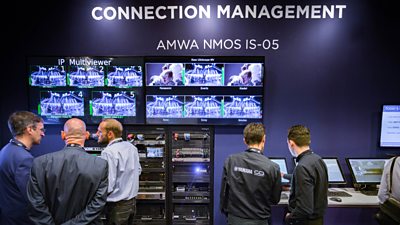
����ý R&D - Industry Workshop on Professional Networked Media
����ý R&D - Investigating the IP future for ����ý Northern Ireland
Following the successes at the workshops the Connection Management API was demonstrated in the IP Showcase at IBC in Amsterdam. This saw a demonstration of the API, now formally designated IS-05 by the AMWA, being used to establish connections using equipment from multiple vendors.In October this year IS-05 was elevated from a "Draft" to a "Proposed" specification by the AMWA board - an important milestone - and ����ý R&D will continue to support the specification as it moves towards becoming a full specification.
Sign up for the IP Studio Insider Newsletter:
Join our mailing list and receive news and updates from our IP Studio team every quarter. Privacy Notice
First Name:
Last Name:
Company:
Email:
or Unsubscribe
Lightweight Live
Another new research activity we started in 2017 was . The purpose of this work is to understand the systems broadcasters need to ‘go live’ from anywhere using just an internet connection and lightweight production equipment (think software on a laptop or a smartphone app). This will enable us to produce high-quality content (multi-camera, graphics, etc.) from more locations, in less time.
A bit of context is helpful here - In a conventional broadcast centre, you have to decide your studio capabilities a long time in advance: production equipment is purchased, wired up and then performs a relatively fixed set of tasks. This means it’s hard to change both the amount and type of production work you can undertake. Moving broadcast centres to IP can help solve some of these problems – for example, as mentioned previously, IS-05 makes it easier to wire up virtual connections between devices – but IP alone is not the whole answer to increasing our flexibility and agility.
We’re looking at how cloud computing can free broadcasters from these fixed infrastructure constraints by allowing resources such as networking, computing and storage to be dynamically allocated to productions. In this model, your broadcast centre exists purely as software applications connected by virtual networks. The set of applications and the resources they consume can be changed very rapidly. It’s even possible to use public cloud computing resources to ‘top up’ in-house capability.
We’ve already – showing how cameras in Salford, London and Amsterdam could be used to make a programme ‘on-demand’ in the public cloud via a web browser. We’ve also been working with the wider ����ý and industry bodies like AMWA to take the first steps in transitioning our research into live production systems and specifications.
Putting broadcast technology in the cloud affords broadcasters flexibility to pick and choose the resources they need.
����ý R&D - IP Studio: Lightweight Live
����ý R&D - Nearly Live Production
����ý R&D - Building a Live Television Video Mixing Application for the Browser
Low Cost IP Studio Camera
As part of IP studio’s goal to build a platform that other teams within the department can test what new experiences could be possible using IP, we have been developing a low cost IP Studio camera. As it is still early days for IP broadcasting, there are no cameras on the market that can produce a stream we can receive directly with our prototype IP Software. To remedy this we use a conventional camera and feed its traditional SDI output into a Linux machine with an SDI capture card. This machine runs the IP Studio software stack and turns the camera feed into an IP Studio feed. This method is both expensive and not very portable, so until the market catches up we needed a way to capture content in a cheaper and easier to use way which we can use in our research projects.
For a little under £100 we have created an IP studio camera using a Raspberry Pi, which registers itself using NMOS IS-04, making it visible on our Web Router, and starts streaming a IP studio compliant video steam to the network. The only connection it requires is an Ethernet cable, which provides both the IP connection and power using PoE (Power over Ethernet).
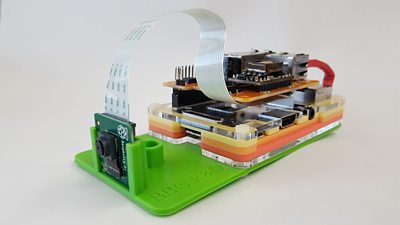
This camera is a previously missing link in our efforts to do IP end-to-end and allows us to quickly capture multiple IP video streams from anywhere with an internet connection. It can be used with existing projects such as the work, or .
Support of Other Projects
As we move towards a future of web fit, cloud fit, IP end-to-end broadcasting an increasing number of our colleuges in ����ý R&D are finding it helpful to build their projects on the foundations we have laid with our prototype software. Chris Northwood recently posted explaining his work on formalising this support in the form of a trial platform, which other projects can use to build their ideas on.
Projects already using our software include to help them research ground breaking new personalised, interactive and immersive content using an which relies heavily on IP Studio software and concepts. The ORPHEUS project is an excellent example of how a transition to IP end-to-end production makes building new experiences for our audiences possible.
And Finally
The flexibility of IP production inspired one of our to write a plugin for our software that allows us to quickly write Python or Julia sketches that can transform video in our IP Studio pipelines. To demonstrate his work Jonathan decided to embrace the festive spirit and transform our North Lab’s kitchen table into a snow globe!
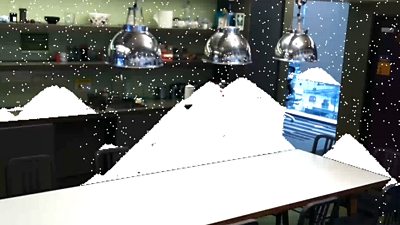
Using the low cost camera set up video is sent over IP to a server which uses a simple edge detection algorithm to find edges in the scene, which virtual snow can then settle on. The video is then sent on, again using IP broadcast technology, to a screen in our kitchen so R&D staff can see themselves being gently dusted with snow while they eat their lunch. Ingenious! While undoubtably great fun this demo also highlights the way in which we can make it easier do novel things with content, by keeping it in the IT domain throughout the broadcast chain.
-
����ý R&D - High Speed Networking: Open Sourcing our Kernel Bypass Work
����ý R&D - Beyond Streams and Files - Storing Frames in the Cloud
����ý R&D - IP Studio: Lightweight Live
����ý R&D - IP Studio: 2017 in Review - 2016 in Review
����ý R&D - IP Studio Update: Partners and Video Production in the Cloud
����ý R&D - Running an IP Studio
����ý R&D - Building a Live Television Video Mixing Application for the Browser
����ý R&D - Nearly Live Production
����ý R&D - Discovery and Registration in IP Studio
����ý R&D - Media Synchronisation in the IP Studio
����ý R&D - Industry Workshop on Professional Networked Media
����ý R&D - IP Studio at the UK Network Operators Forum
����ý R&D - Industry Workshop on Professional Networked Media
����ý R&D - Covering the Glasgow 2014 Commonwealth Games using IP Studio
����ý R&D - Investigating the IP future for ����ý Northern Ireland
-
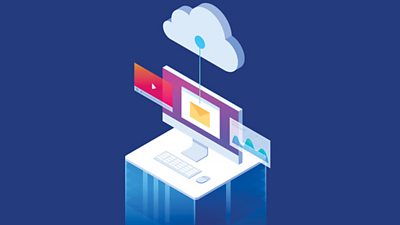
Automated Production and Media Management section
This project is part of the Automated Production and Media Management section
